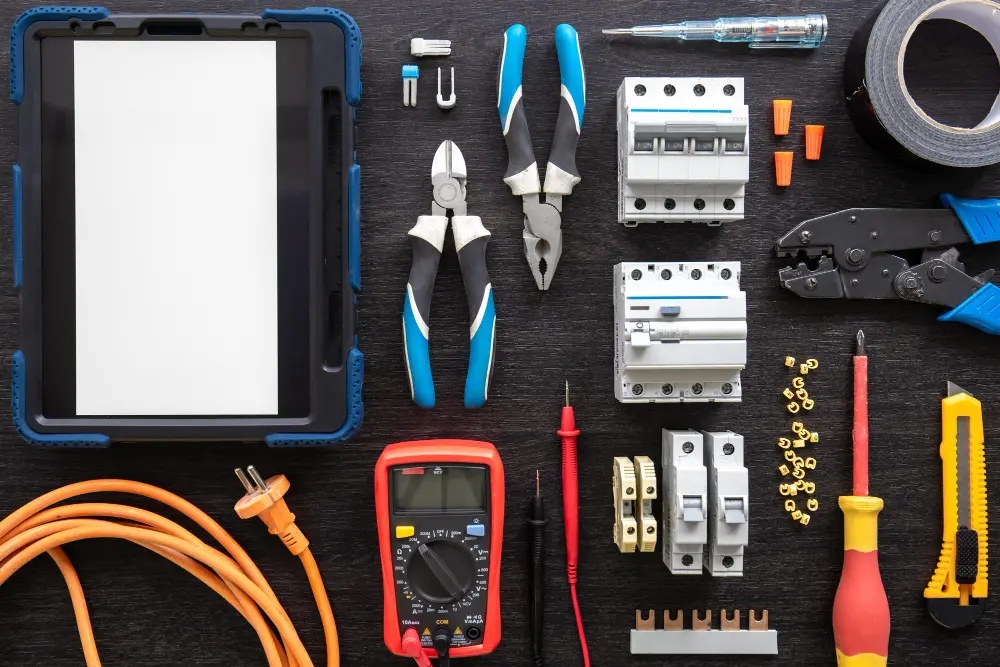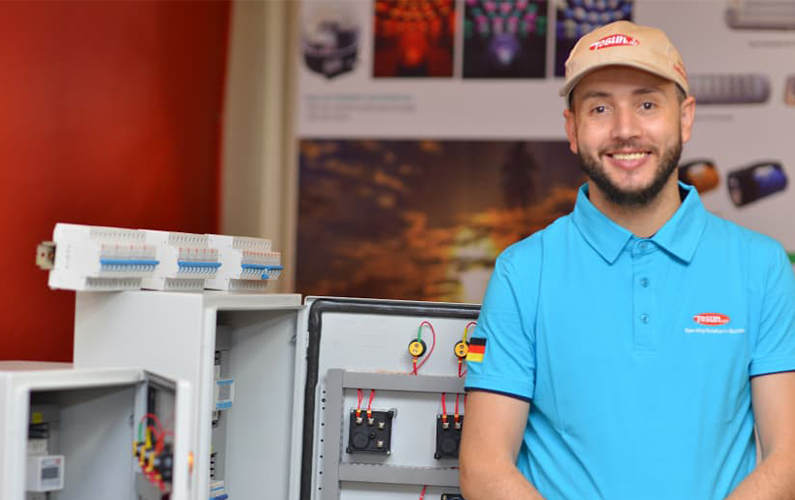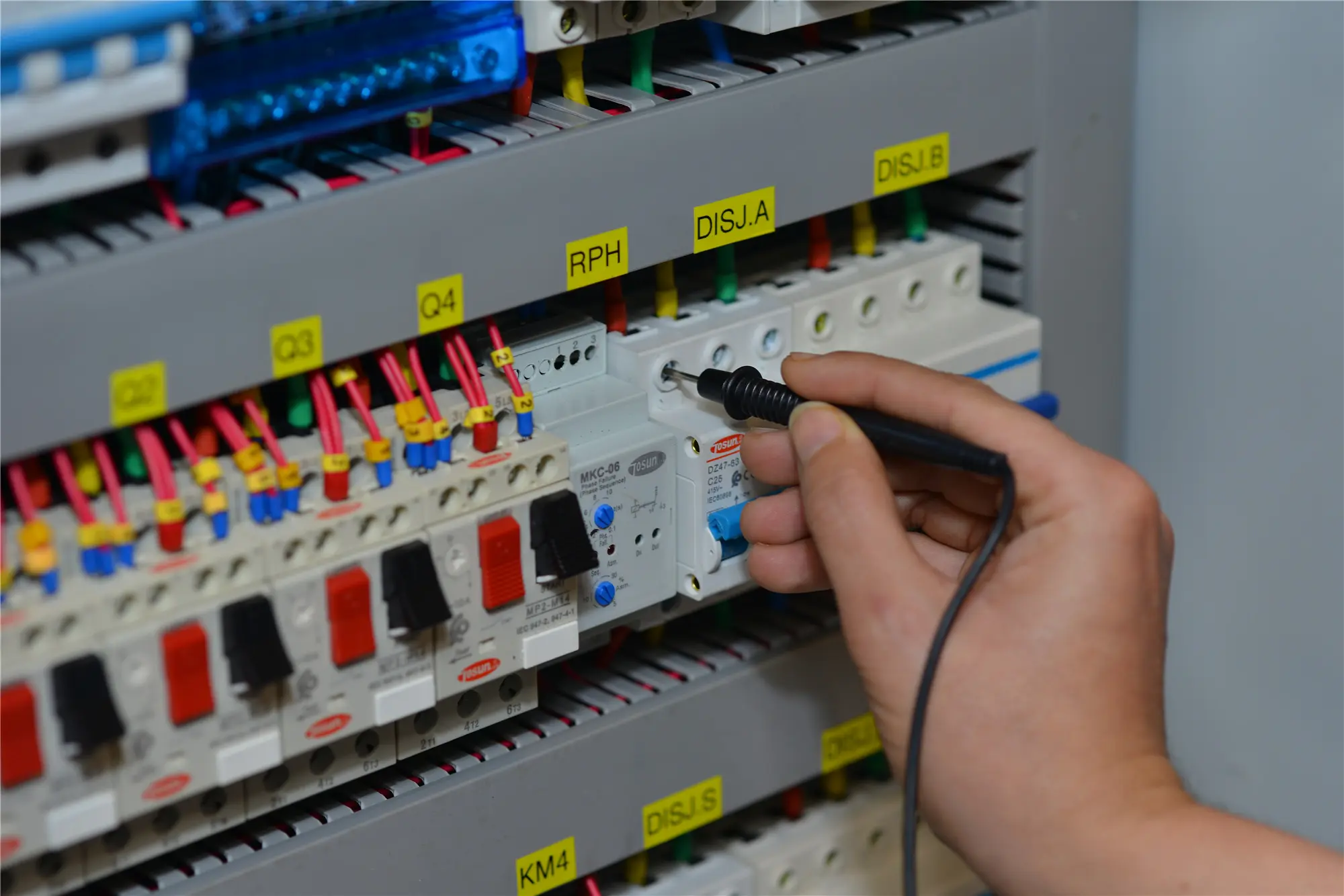Comment devenir distributeur d’une marque électrique chinoise ?
Table des matières
BasculerPour devenir distributeur d'une marque d'électricité chinoise, vous devez effectuer des recherches sur les marques, préparer un business plan et nouer des relations avec les fabricants. Le processus complet prend généralement de 6 à 12 mois, de la recherche initiale à la signature du contrat. Un capital de démarrage de 100 000 à 300 000 $ est nécessaire pour la plupart des entreprises de distribution d'électricité.
Pourquoi devriez-vous vous associer à une marque électrique chinoise ?
Les marques chinoises d'équipements électriques offrent des avantages majeurs aux distributeurs qui cherchent à être compétitifs sur leurs marchés. Le principal avantage réside dans les économies de coûts de 30-50% par rapport à leurs concurrents occidentaux, réalisées par les fabricants chinois grâce à des chaînes d'approvisionnement efficaces et à des capacités de production à grande échelle.
Un autre avantage majeur réside dans leur orientation vers l'innovation technologique. Des entreprises comme Haier et Gree investissent massivement dans les technologies de la maison intelligente et les produits écoénergétiques, ce qui permet de proposer à leurs clients les produits les plus récents qu'ils recherchent.
La fiabilité de la production garantit également la disponibilité constante des produits lorsque les clients en ont besoin. Les fabricants chinois peuvent gérer des commandes importantes tout en maintenant des chaînes d'approvisionnement stables, ce qui vous permet de gagner la confiance de vos clients qui dépendent d'une disponibilité constante des produits.
Quelles sont les exigences du distributeur électrique ?
Devenir distributeur d'électricité implique de satisfaire à plusieurs exigences garantissant une activité sûre et légale. Ces exigences se répartissent en trois catégories principales :
- Conformité juridique et commerciale : Dans la plupart des pays, vous devez disposer d'un enregistrement d'entreprise et des licences de distribution d'électricité nécessaires. Vous devez également comprendre les codes électriques et les normes de sécurité locaux, car certains produits nécessitent des permis spéciaux avant leur mise en vente.
- Capacité financière : La plupart des distributeurs d'électricité ont besoin d'un capital de démarrage de 100 000 à 300 000 $ pour couvrir les stocks, l'installation de l'entrepôt et les frais d'exploitation. Un fonds de roulement suffisant est crucial, car vous paierez vos fournisseurs avant de recevoir les paiements de vos clients.
- Infrastructure opérationnelle : Vous avez besoin d'un entrepôt sécurisé, de véhicules de livraison et d'un personnel formé à la manutention des équipements électriques. Une assurance responsabilité civile et pertes de stock est généralement obligatoire et protège votre investissement.

Quelles sont les étapes pour devenir distributeur d’une marque électrique chinoise ?
Le processus de distribution comprend cinq étapes principales. Chaque étape aboutit à un accord de partenariat formel avec le fabricant de votre choix.
Étape 1 : Rechercher et identifier les marques électriques
Commencez par identifier les produits électriques les plus demandés sur votre marché. Concentrez-vous sur les catégories où vous pouvez développer votre expertise et nouer des relations clients.
Utilisez les plateformes en ligne pour rechercher des marques potentielles. Alibaba.com offre le plus grand choix et des fournisseurs vérifiés. Made-in-China.com et Global Sources offrent des contacts supplémentaires. Privilégiez donc les entreprises disposant d'un site web en anglais et d'une solide expérience à l'exportation.
Vérifiez la réputation de votre marque grâce aux avis clients et aux certifications sectorielles, notamment celles des fabricants certifiés CE, UL ou autres. Vérifiez l'ancienneté des entreprises et leurs antécédents auprès des distributeurs internationaux.
Étape 2 : Préparez votre proposition de distribution
Créez un business plan qui démontre votre connaissance du marché et vos compétences. Les fabricants chinois vous évalueront comme distributeur potentiel ; votre proposition doit donc être bien préparée.
Votre plan d’affaires doit inclure des sections spécifiques que les fabricants s’attendent à voir :
- Résumé exécutif avec le contexte et les objectifs de votre entreprise
- Analyse de marché montrant la demande locale, les prix des concurrents et les segments de clientèle
- Projections financières pour les 3 premières années, y compris les prévisions de ventes et de flux de trésorerie
- Stratégie marketing expliquant comment vous allez promouvoir leurs produits
- Plan d'opérations couvrant l'entrepôt, le personnel et les capacités de livraison
Incluez des prévisions de ventes réalistes basées sur des études de marché. Si des produits électriques similaires se vendent à 1 000 unités par mois dans votre région, ne prévoyez pas 5 000 unités la première année. Les fabricants privilégient les estimations prudentes, que vous pouvez dépasser.
Étape 3 : Contacter et établir des relations
Le premier contact doit témoigner de professionnalisme et d'un engagement commercial sérieux. Les fabricants chinois privilégient les relations de confiance aux transactions rapides ; cette étape nécessite donc généralement deux à quatre mois de communication continue.
Commencez par un e-mail de présentation professionnel qui détaille l'historique de votre entreprise, votre expertise du marché et votre intérêt particulier pour ses produits, ainsi que votre business plan et vos documents d'entreprise pour montrer votre préparation. Soyez concis et informatif pour faire bonne impression.
Privilégiez les rencontres en face à face dès que possible, en planifiant des visites d'usine lors de voyages d'étude en Chine ou des réunions lors de salons professionnels comme la Foire de Canton. Les fabricants chinois prennent souvent des décisions de partenariat finales sur la base de rencontres personnelles plutôt que de simples échanges par courriel ; investissez donc du temps dans ces relations.
Soyez patient pendant cette phase de construction de relations, car les entreprises chinoises préfèrent développer des partenariats stables et durables plutôt que de conclure des accords à la hâte. Prévoyez trois à six échanges d'e-mails ou d'appels avant le début des discussions contractuelles sérieuses.
Étape 4 : Finaliser l’accord de distribution
Les contrats de distribution définissent les responsabilités et les attentes des deux parties. Négociez des conditions qui protègent vos intérêts tout en témoignant de votre engagement envers la réussite du fabricant.
Les droits territoriaux, qu'il s'agisse d'accords exclusifs ou non exclusifs, doivent être clarifiés. Les territoires exclusifs offrent un meilleur potentiel de profit, mais requièrent souvent des engagements de vente minimum. Les accords non exclusifs offrent plus de flexibilité, mais renforcent la concurrence.
Les exigences de performance comprennent les objectifs de vente, les activités marketing et les normes de service client. Négociez des objectifs réalistes en fonction de la taille du marché et de la concurrence. Prévoyez des dispositions pour ajuster les objectifs en fonction de l'évolution de la situation.
Éléments clés du contrat à aborder :
- Structures de prix et remises sur volume
- Quantités minimales de commande et conditions de paiement
- Responsabilités en matière de certification et de conformité des produits
- Soutien marketing et protection du territoire
Étape 5 : Obtenir le financement et lancer les opérations
Un investissement initial important sera nécessaire avant de générer des revenus. Planifiez soigneusement votre financement pour éviter les problèmes de trésorerie pendant vos 12 à 18 premiers mois d'exploitation.
Vos coûts de démarrage totaux comprendront généralement ces dépenses majeures :
- Achat d'inventaire initial : $50 000-150 000
- Installation et équipement de l'entrepôt : $20 000-50 000
- Dépenses d'exploitation de la première année : $30 000-100 000
- Coûts de marketing et de lancement : $10 000-30 000
Organisez votre financement grâce à des prêts commerciaux, des investisseurs ou des programmes de financement des fabricants. Certains fabricants chinois proposent des délais de paiement prolongés, comme 60 ou 90 jours nets, pour les distributeurs qualifiés. Cela peut réduire considérablement vos besoins en fonds de roulement.
Mettez en place des systèmes de gestion des stocks pour suivre les niveaux de stock et automatiser les réapprovisionnements. Les produits électriques ont une longue durée de conservation, mais nécessitent des conditions de stockage appropriées pour éviter tout dommage. Planifiez vos niveaux de stock en fonction des délais de livraison des fournisseurs, généralement de 30 à 45 jours depuis la Chine.
Développez votre stratégie de commercialisation en vous concentrant sur vos principaux segments de clientèle. Les installateurs électriciens achètent souvent en gros et privilégient la disponibilité. Les services de maintenance industrielle ont besoin d'un support technique et de formations produits. Les clients particuliers recherchent des prix compétitifs et un emballage de qualité.
Conclusion
Devenir distributeur d'une marque chinoise d'équipements électriques peut vous permettre d'accéder à des prix compétitifs et à des produits innovants pour votre marché. Pour réussir, une préparation rigoureuse, incluant la planification commerciale, le développement de relations et l'investissement en capital, est nécessaire. Votre réussite dépend du respect des exigences réglementaires et de la démonstration de votre expertise du marché à des partenaires industriels potentiels. Commencez par rechercher les marques qui correspondent à vos opportunités de marché et élaborez un plan d'affaires complet. Si vous êtes prêt à explorer les opportunités de distribution, pensez à envisager devenir partenaire TOSUNlux où nous accompagnons les distributeurs avec 30 ans d'expérience de fabrication et des produits éprouvés
Tél. : +86-577-88671000
E-mail: ceo@tosun.com
Skype : àsunelectric
Wechat : +86-139 6881 9286
WhatsApp : +86-139 0587 7291
Adresse : Salle n° 1001 Wenzhou Fortune Center, Station Road, Wenzhou, Chine
DEMANDER UN DEVIS
Envoyez-nous un WhatsApp
 : +86-139 0587 7291
: +86-139 0587 7291 Anglais
Anglais Espagnol
Espagnol Russe
Russe Français
Français العربية
العربية Portugais du Brésil
Portugais du Brésil Ukraïnské
Ukraïnské turc
turc Polonais
Polonais Néerlandais
Néerlandais Italien
Italien Indonésien
Indonésien shérif
shérif اردو
اردو አማርኛ
አማርኛ Հայերեն
Հայերեն ไทย
ไทย Mongol
Mongol فارسی
فارسی Shqip
Shqip Élagueur
Élagueur


